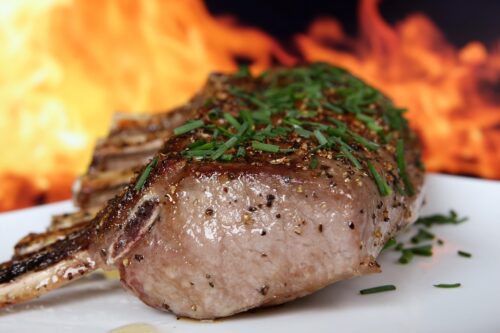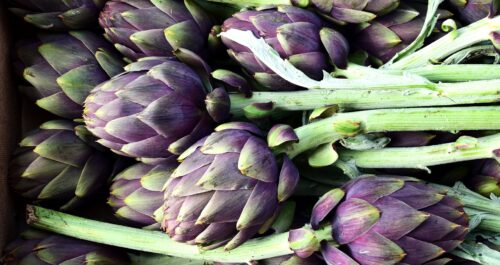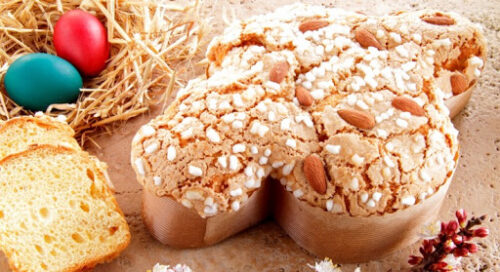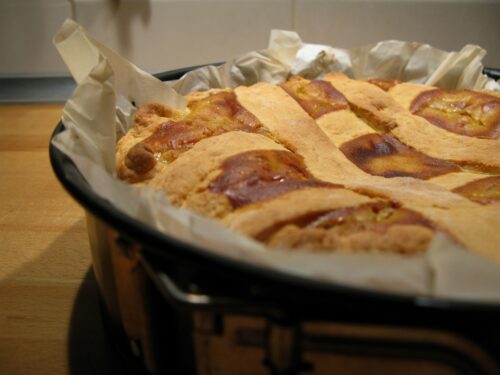Happy Easter to everyone from the team of Essence of Rome!!!!
Which are the Easter traditions of your country? What do you usually do during Easter holidays? In Italy we are sooo different from each other, depending from the region we are from, we have different traditions and ways to spend this important holiday, but the thing that really connects all of us is….food!
In fact, there’s not much to do in Italy this Easter apart from stay at home and eat. So here are some classic Italian Easter dishes to try at this time of year, from traditional lamb and artichokes to an unusual pig’s blood dessert.
- Lamb: Easter Monday is known as Pasquetta (“Little Easter”) in Italy, but is also sometimes called Lunedi dell’Agnello or “Lamb Monday”, giving a clue to the most traditional centrepiece of the lunch table. Romans typically prepare lamb soup or cook it in an egg and citrus sauce, southern Italians often put it in a stew, while elsewhere it will be roasted with garlic and rosemary – every family and restaurant will have its own special recipe.

- Fish: Good Friday¹, a sombre date in the Catholic calendar, was traditionally a day of fasting. These days some Catholic families opt for fish, typically choosing light dishes with simple dressing. In fact, many people observe meat-free Fridays for the entire Lent period – some even keeping to the tradition the whole year round – in tribute to Jesus’s self-sacrifice.
- Artichokes: Stuffed, braised or fried, enjoyed as a side dish or appetizer, artichokes are a springtime staple and a common feature of the Easter meal.

- Torta alla Pasqualina (Easter pie): Don’t be fooled by the word torta: this dish is savoury rather than sweet. It’s a Ligurian staple, a kind of quiche with spinach and cheese. Tradition dictates that there should be 33 layers of pastry (three being an important number in Christian doctrine) and it’s possibly the trickiness of the preparation that means the pie is reserved for special occasions.
- Sanguinaccio dolce: Sanguinaccio is the Italian version of what Brits call black pudding and what Americans know as blood sausage – yet unlike those savoury dishes, sanguinaccio dolce is in fact a dessert made from pig’s blood and chocolate. The dish is traditionally eaten in the run-up to Easter across much of Italy’s centre-south, but is particularly associated with the region of Basilicata, on the instep of Italy’s boot. The recipe combines dark chocolate with pig’s blood to make a rich, sweet and acidic cream, which can be eaten with savoiardi biscuits or used as a filling for shortcrust pastry tarts.
- Colomba di Pasqua: This cake is perhaps the best known culinary symbol of Easter in Italy. Named “Easter dove”, it’s baked in the shape of a bird to symbolize peace, and made with candied citrus peel and almonds.

- Riso Nero di Pasqua (Black Easter rice): A Sicilian speciality, this dish is prepared using black rice. However, while black risotto is usually covered with squid ink, this is a sweeter treat – the colouring comes from chocolate. The riso nero is a dessert similar to rice pudding, made with milk, rice, cocoa and chocolate, and decorations usually consisting of cinnamon and sugar sprinkles. The legend goes that the dessert was first made in homage to Sicily’s Black Madonna, a mysterious statue in Tindari thought to be responsible for numerous miracles.
- Pastiera Napoletana: This Neapolitan dessert is found across the south of Italy at this time of year, and its ornage-spiked ricotta filling leaves it deliciously moist. The original recipe is thought to have been created by a nun who specifically chose to use ingredients signifying life. If you’re making your own, be warned that chefs usually recommend starting the process on Good Friday to allow plenty of time for the flavours – from orange peel and orange flower water – to infuse before Easter Sunday.

- Easter eggs: If you’re worried about doing without more familiar comforts, fear not – chocolate eggs have become a part of Easter tradition in Italy, often with a hidden treat in the middle. You’ll see elaborate displays of extravagantly wrapped eggs lining shop windows all throughout Lent. Resist until Easter Sunday if you can.
During our Essence of Rome Tours we always love to talk about food and traditions and we love to suggest the best Roman restaurants or the most typical dishes you must taste once in Rome! That’s why we included in our website a Food and Wine tasting tour and an entertaining Cooking Class…everyone wants to hear and learn about Italian food and we’re happy to please you!
For all the information and details you need click HERE





